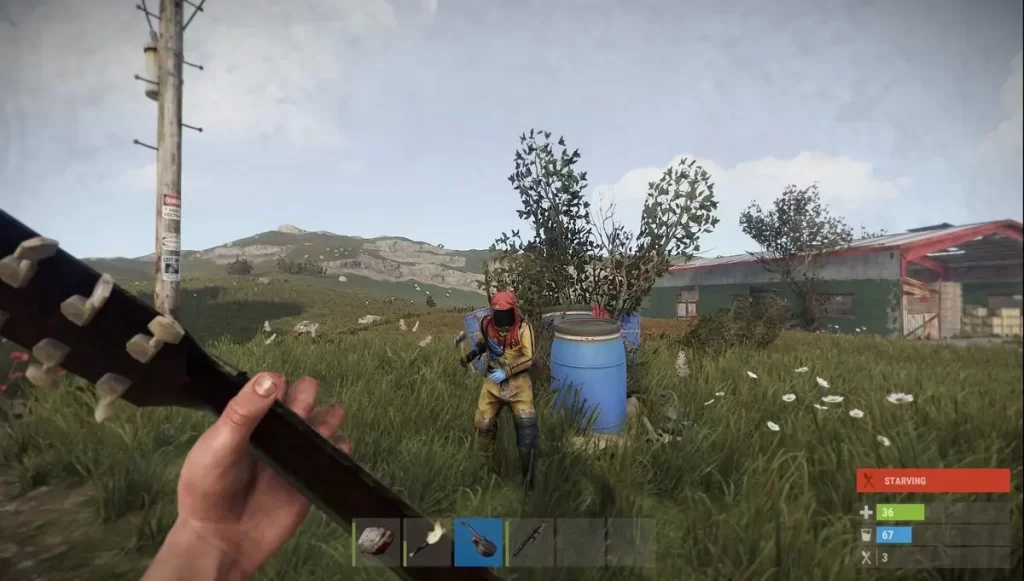

Imagem mostra o gameplay de Rust com um personagem ao fundo com todas os equipamentos de segurança e uma mão com uma clava.


One of the crucial elements in the gameplay of Rust is its progression system when it comes to blueprints. Blueprints act as a type of progression method whereby players can unlock and craft items. This system is a nice balance, where players have to invest time and effort in acquiring new items, adding more depth and strategy to Rust’s gameplay.
The Role of the Blueprint within Rust
Blueprints hold immense value in Rust, for they are required to craft specific items that range from weapons and tools to components of building. At the start of the game, your character only knows a few basic blueprints, and you’re supposed to travel around the world in search of new ones. Pretty much, the blueprints are the bases needed for crafting and progression, so they hold a fat value. By uncovering, or researching, blueprints, players can learn over time how to craft more powerful items and build safer bases-definitely key in a world of scrounging for basic resources and never really knowing how long one will survive.
How to Obtain Blueprints
There are a few different ways to obtain blueprints within Rust. Players can find the blueprints while rummaging through various loot containers that litter the map, or they are able to acquire an item, recycle it, and then conduct research on the item for its blueprint. Since these designs are mainly rare for high-tier items, a player has to strategically think about where to search and which items to invest their time and effort into. Some try to find effective Rust cheats and hacks with Esp at Lavicheat’s; however, some gamers might be interested in playing strategically in order to get their blueprints through organic gameplay, and therefore, every decision has a lot of weight.
How to Progress Through Blueprint Tiers
Rust has included a blueprint system that, for the most part, can be separated into tiers-basic to advanced. Players, as they progress, unlock stuff that gets powerful, and the time and material investment for higher tiers is great. Another fine example of a progression model that does not allow players to jump directly into endgame items. Early-game blueprints give way to simple tools and weapons, while mid-game ones finally provide more substantial defensive and offensive equipment. Late-game blueprints will give way to high-damage weapons that players can utilize and protection armor for better defense.
Impact on Player Interaction and PvP
Blueprints also affect interaction between players and how PvP goes in Rust. With such valuable types of blueprints up in the air, player interaction might get hostile in a glimpse. Others particularly target other people for blueprints or items they have with them and may immediately get into intense, unpredictable encounters. This aspect adds an extra layer of tension and excitement, too-you never know whether the guy you killed had that blueprint you might have needed. Through the defense of your base and blueprints you manage to obtain, you are securing your progress, making PvP not only a matter of survival but one of retaining and building on your blueprint library.
Blueprints in Rust shape everything from progress and strategy to social gaming. All this involves a conscious choice: where to spend resources, whom or what to explore, and where to fight. With each blueprint earned, the player gets a sense of accomplishment and an opportunity to craft better equipment. Rust’s blueprint progression is about surviving, exploring, and taking risks. Some of them will be eager to try out effective Rust cheats and hacks with Esp at Lavicheat’s for the upper hand, but pride-building up through legitimate means, not with the use of hacks-builds in them a drive to see just how far they can take their survival in this harsh world of Rust. That depth in this makes players want to come back and work toward the next blueprint to unlock.
NeoSpace Games, a Brazilian developer, has officially unveiled ASTRON, a new launcher that promises to…
Counter-Strike 2 skins are the modern way of collecting with actual worth and great significance,…
The mobile gaming classic, Flappy Bird, is officially back! More than a decade after its…
The Winlator Windows emulator for Android has had its development paused after accusations that it…
Betting operators face significant challenges when designing bonus programs that work across different markets. Regional…
Tencent Games held its traditional annual conference, SPARK 2025, this Monday (22), bringing a flood…